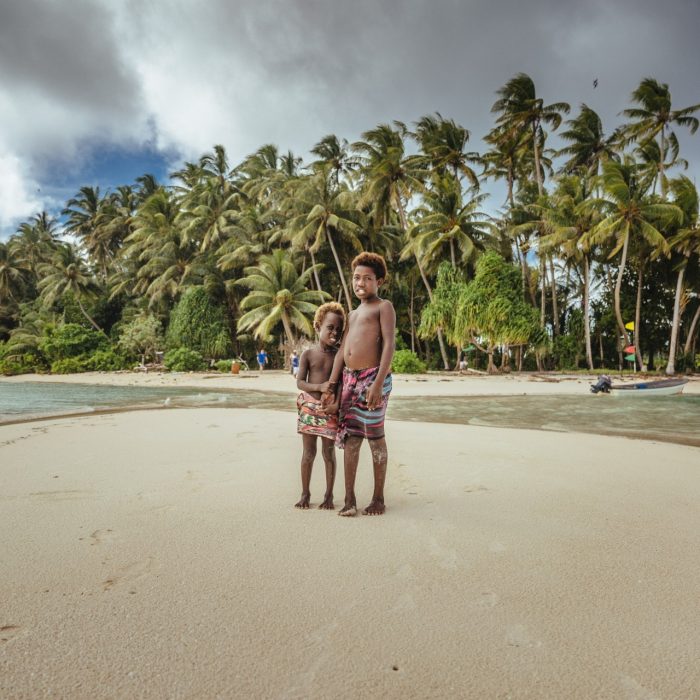Climate change, disasters and displacement
How do we ensure that people moving in the context of climate change and disasters have their rights and dignity protected?

The challenge
Every second, someone is displaced by a disaster. Each year, about three times as many people are displaced internally by disasters than by conflict – the vast majority in the Asia-Pacific region.
Climate change will amplify the problem as worsening cyclones, floods, bushfires, droughts and food insecurity force millions from their homes, potentially rendering some areas permanently unsafe. Most people will move within their own countries, but some may be displaced across borders.
While the challenges of addressing climate change and disasters are immense, much can be done to alleviate displacement and its human costs – if we act now.
Whether and how people move will be dependent on mitigation, adaptation, disaster risk reduction, financing, resourcing, technological innovation and migration policies. In other words, the extent of climate mobility will in part depend on the choices we make today.
We need to develop laws and policies that assist people to remain in their homes where this is possible and desirable; to move elsewhere, in anticipation of harm; and to be protected and assisted if they are displaced. At all times, safeguarding people’s choices, rights and dignity must be paramount.
Our impact
At the forefront of global efforts to ensure that people displaced in the context of climate change and disasters are protected, the Kaldor Centre is actively engaged in key international policy processes – from advising the UN Refugee Agency on its global strategy, through to informing frameworks that have been endorsed by the majority of the world’s governments. As a senior negotiator on the world’s first migration compact explained, ‘[m]uch of what is reflected in [that instrument] would not have been possible without the conceptual work done by the Kaldor Centre.’
We provided advice to the Biden Administration about how the US could create protection and resettlement frameworks for people displaced by climate change impacts. We advised Pacific governments on strategies to preserve statehood and protect people affected by sea-level rise, and created the initial draft of a world-first climate mobility framework for Pacific States. At all times, our approach is informed by the views of communities on the frontline of climate change, garnered through our fieldwork in the Pacific, South Asia and Africa.
Our pioneering research is already making a difference for people on the ground – assisting people at risk of displacement to secure their long-term future.
Our work
Our vision is a world in which people at risk of climate-related displacement can lead safe, dignified and secure lives. We work in partnership with communities, governments and international organisations to help develop holistic solutions for people at risk. By combining our legal and policy expertise with lived experience on the ground, we help to ensure affected communities are ‘future ready’ by anticipating, preparing for and responding to climate mobility.
We do the deep, long-term thinking that drives more nuanced understandings of international law in this context, including with respect to refugee law, migration law, statelessness, statehood, human rights and the protection of culture, nationality and franchise.
We work with affected communities to co-design legal and policy responses that help them adapt and reduce the risks posed by climate change and disasters, while also enabling them to move safely out of harm’s way if the need arises.
We develop robust legal and policy frameworks that guide more predictable and coordinated responses, upholding the human rights of people at risk and ensuring that their knowledge, views and perspectives are reflected.
We help governments to plan for the long term and devise strategies to protect the security and well-being of their populations. In doing this, we enhance public understanding about how climate change affects movement, so as to foster constructive engagement and solutions.
Our global work has included:
Co-drafting the first iteration of the Pacific Regional Framework on Climate Mobility, opens in a new window – a world-first instrument that is currently being deliberated by Pacific Leaders;
Advising Pacific governments on strategies to preserve statehood and protect people affected by sea-level rise;
Spearheading the drafting of the International Law Association’s Sydney Declaration on the Protection of Persons in the context of Sea Level Rise
Contributing to the development of the Nansen Initiative Protection Agenda (endorsed by 109 governments), which provides a roadmap for national, regional and global initiatives on addressing disaster displacement;
Providing legal and practical guidance to governments on climate mobility, including the Biden Administration and authorities in the Americas and the Pacific;
Advising UNHCR on its institutional strategy on climate-related displacement, including applicable legal principles;
Drafting the Research Agenda for Advancing Law and Policy Responses to Displacement and Migration in the Context of Disasters and Climate Change in Africa
Providing key input into Guidance for Governments on Protecting People from Disasters and Environmental Change through Planned Relocation (UNHCR, Georgetown, Brookings)
Co-creating the Climate Mobility Africa Research Network (with Masinde Muliro University of Science and Technology, Kenya)













